Spirou 53: Dans les griffes de la Vipère /
I Hugormens Kløer
![]()
Dupuis (French), Cobolt (Danish), 46 pages
“The Year of Spirou,” the 75th anniversary of the comic, has so far been packed full of unique events, major announcements and interesting publications. But few are as exciting as seeing the series itself in excellent health, with the release of a great new album.
And the new adventure, Dans les griffes de la Vipère (“In the Clutches of the Viper”), recently published in Danish as I Hugormens Kløer, is pretty great. Not flawless or about to rank with the highest classics, but easily the strongest of Yoann & Vehlmann’s contributions so far (including their out-of-continuity one-shot, Les géants pétrifiés; or “The Petrified Giants”), and arguably the best “real” Spirou adventure we’ve had for twenty years or more.
(This review contains SPOILERS for this and previous albums, though I’ve tried to keep them to a minimum.)
As Spirou writer, Vehlmann has always emphasized the character’s metafictional relationship with the magazine that bears his name and publishes his adventures: Spirou is employed by the Journal de Spirou to star in the comic and be a mascot for the magazine, and his contract stipulates certain responsibilities (such as having to wear the uniform when he’s on the job).
“In the Clutches of the Viper” takes that odd arrangement to its most extreme conclusion: when the struggling magazine is bought up by the shadowy VIPER Corporation (“Very Important People – Extremely Restricted”), Spirou finds that he himself is now effectively the property of an eccentric billionaire, who sees him as little more than a living collectible. Soon he is on the run, but old-fashioned heroics don’t help much against a massive multinational with political connections and armies of lawyers.
Yoann & Vehlmann have called the story a thriller, which is a fair description. The first half is all intrigue and deception, and the second half consists almost entirely of a series of chase sequences. It’s a simple and not terribly original structure, but the details are inventive and feel specific to this universe, and in true Spirou fashion it’s supported by a gallery of colorful characters (new and old), satirical references to current events, plenty of gags as well as some surprisingly rich thematic concerns, and a breakneck pace that takes the hero all over the globe. In combination with Yoann’s art, the result is a Spirou adventure that is fresh and modern, yet traditional enough to be right at home in the classic series.
In discussing the characters, two new ones immediately stand out: on the one hand Spirou’s new kid sidekick, Ninon (“Nina” in Danish), and on the other his childhood idol, the veteran detective adventurer Gil Coeur-Vaillant (“Gil Hjertensgod”). Introduced on the first page, Ninon is a Spirou fan and wannabe adventurer who ends up providing Spirou with invaluable help. The words “kid sidekick” are likely to raise a red flag for some readers, but Ninon’s energy, smarts and boundless enthusiasm for adventure make her an instant favorite. At the same time, she’s not insufferably precocious or, for example, a computer genius. It also helps that she’s not overused, or someone Spirou has to drag around everywhere and rescue from danger. While I wouldn’t want her to join Spirou and Fantasio as a main character, here’s hoping she shows up again regularly in future albums.
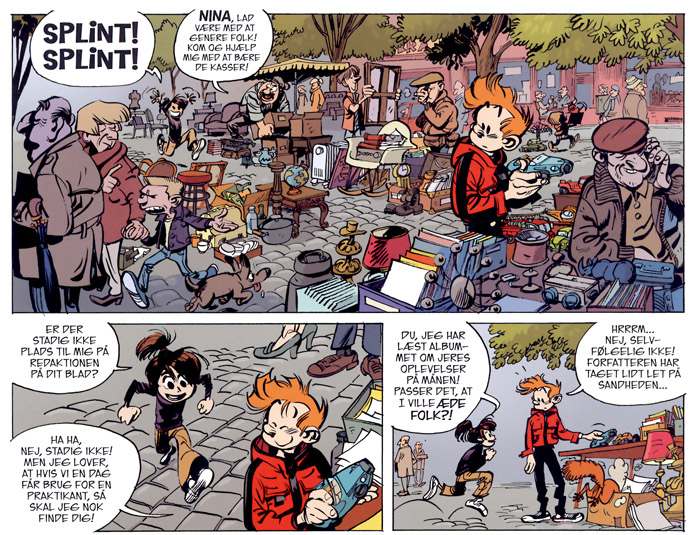
If Ninon is the ghost of adventures future, Gil Coeur-Vaillant (lit. “Brave Heart,” his last name references the magazine that first published Tintin in France) is the past. An amalgamation of classic BD action heroes of the 50s and 60s such as Jean Valhardi, Gil Jourdan and Ric Hochet, with his hatchet face, dapper suit, trench-coat and pipe he strikes just the right note of aging machismo, faded glory and compromised idealism. Within the story, Coeur-Vaillant serves to remind Spirou of his own childhood inspirations, while also showing who he might one day become. But, of course, the time he comes from was also the golden age of Spirou, so on a meta level he represents nostalgia for the good old days of the comic itself. Paradoxically, by embodying the great age of the series, he allows Spirou to shrug it off. Coeur-Vaillant takes on the old-fashioned elements of the series, Ninon adds fresh blood, and their heroism and shared love of adventure (past, present and future) represents the bond between the three of them and an aspect of the comic that never gets old.
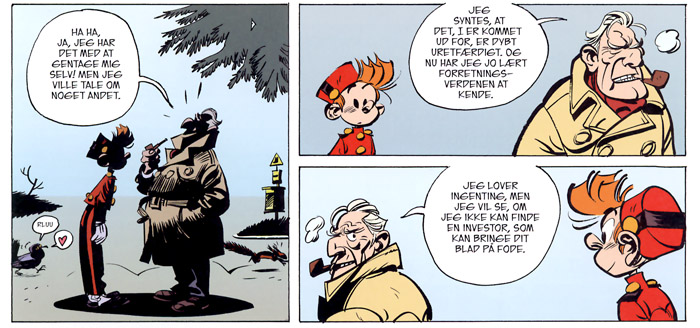
Unfortunately, none of the other characters are as vivid, or achieve anything like the same level of depth. Viper’s CEO (he’s never given an actual name) seems like an attempt to to create an iconic Spirou villain like Zorglub, Doctor Kilikil or Don Vito Cortizone, both menacing and ridiculous at the same time. But although he cuts a great figure visually (Yoann draws him as a diminutive, deranged caricature of David Bowie), his ruthlessness and his quirks don’t cohere into a distinctive personality. There are germs of potentially funny character traits, like his fandom and collector’s mentality, or his absent-minded indifference to the consequences of his actions, but they’re never developed into something that’s recognizably him, that provides psychological insight or a reliable stream of jokes. Similarly, his female lawyer/bodyguard (Miss Jones) is just another of Yoann’s catwalk-strutting amazons, devoid of personality despite an early two-page monolog.
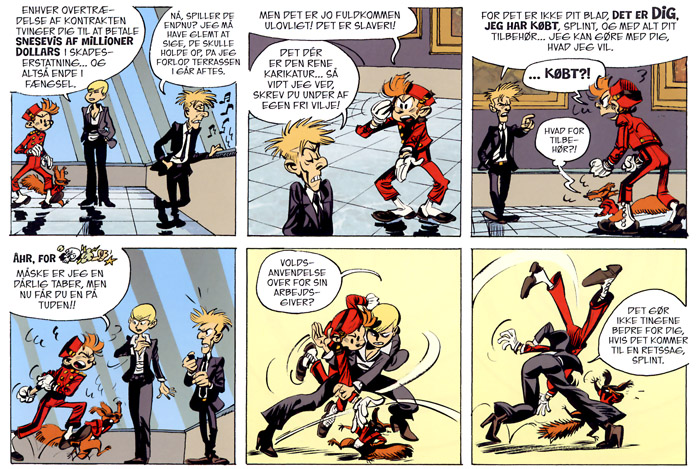
The lack of character development extends to some of the returning characters as well. Seccotine (“Myg” in Danish) makes a welcome return, but is strangely passive, barely even saying a word in her first two scenes. Fantasio is also mostly sidelined, primarily shown in his managerial role. The friendship between Spirou and Fantasio is the heart of the series, and the fact that none of Yoann & Vehlmann’s adventures so far have really dealt with it (Les géants pétrifiés contriving a poorly motivated split between them) is probably the most worrying sign for their tenure.
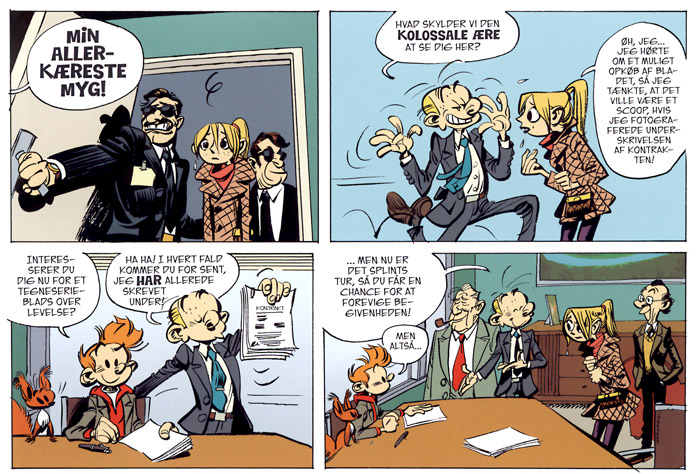
Otherwise, the story is full of dozens of minor characters who pop up, take center stage for a few panels or a few pages, and then disappear from the story. These are generally pretty funny, mainly because of Yoann’s character designs, and overall I find the comedy elements quite successful (though this is of course very subjective). Spip gets a number of good lines, the hunt for Spirou offers the opportunity for many funny moments, and the whole setup is inherently pretty amusing. Besides these, the best running gag is probably the hyper-commercialized society of the Marmalade Islands, a libertarian “paradise” where every building is a bank and the privatized police force demands payment up front before they’ll intervene to stop a crime; the absurdity almost brings to mind Franquin’s Palombia or Bretzelburg.
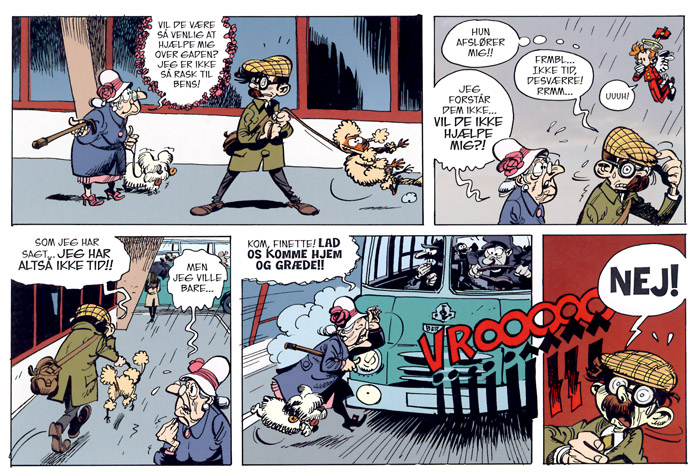
Not all of the satire is as successful, and the simplistic overall message (companies and countries “forced” into bailouts are innocent victims of capitalist exploitation) is disappointingly populist and conventional. The many references to topics around the European economic crisis does make the album particularly relevant to the present, though. In addition, the idea of iconic characters acquired by a massive corporation suggests Disney’s recent purchase of Lucasfilm (Star Wars, Indiana Jones, Monkey Island etc.), even if it cannot be more than a timely coincidence. Still, it helps create the sense of a Spirou that is aware of and engaged with the real world.
So while still flawed, this is a much more satisfying adventure than the last album (Spirou 52, La face cachée du Z, “The Dark Side of the Z”). There, the writing was all over the place, with lots of bizarre little subplots and random ideas which, while intriguing in themselves, never really added up to a coherent story. There’s still something of an episodic feel, but this time around the strong central premise and conflict keep things more focused, and the high pace and well-staged action sequences ensure that it all moves forward at a satisfying clip. Unfortunately, the ending is something of an anticlimax, and gives the impression that Vehlmann painted himself into a corner he couldn’t find a good way out of.
As for the art, I’ve always liked Yoann’s style, and it continues to improve here. His line work remains slightly loose and expressive with a lot of hatching, giving it a scribbly, nervous energy that is the complete opposite of Munuera’s smooth curves. He has a good grip on all the classic characters; his take on Seccotine is a good example of how they are easily recognizable yet fully his own. And to a greater extent than in previous albums, the original characters now seem to inhabit the same world as the familiar ones, without clashing so much in design and style.
In my opinion, Yoann’s weakness has always been scenery and some of the technical props, such as the zorglumobile in Spirou 51, and the moon base and space ships in 52, which came out plain, wobbly and flat. (In fact, some of the props and scenery are drawn by Fred Blanchard at the pencil stage; he is credited for “designs” in all three albums.) Yoann and Blanchard do much better with the more realistic backdrops in this album; city, forest, and interior scenes are all convincingly and pleasingly rendered. That also goes for the Turbotractions (both models appear), which are clearly the result of careful study. Some of the more abstract stuff still doesn’t quite work for me (the inside of a computer, some of the strange rooms in the Viper CEO’s building), but other than that I have no complaints. Many pages are quite simply a joy to look at.

The Danish edition is practically identical to the French, with the same design, same hardcover binding, and similar paper and printing quality. The translation is fine as far as I can judge, and generally sticks close to the original (except for adding a footnote to explain some necessary detail, and eliminating one character’s dialect). The handwriting fonts used for texting speech and shouts are good matches for the original ones (though not identical), and in one respect even improve on the French, which are missing a glyph for “%” and use an ugly substitute.
Spirou 53, Dans les griffes de la Vipère is a fine Spirou adventure, recommended to all fans of the series or of European comedy/adventure comics in general. Yoann & Vehlmann still have some room to grow, but they are shaping up to be one of the better Spirou teams in the history of the series. Cobolt has done an exemplary and faithful job with the Danish edition, managing to put it out only a couple of months after the original. It deserves to be a solid success for them.
[Not a valid template]


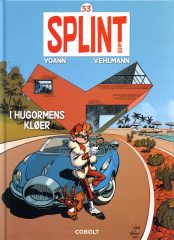
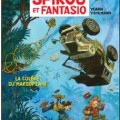

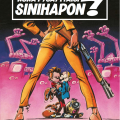
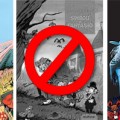
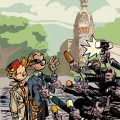

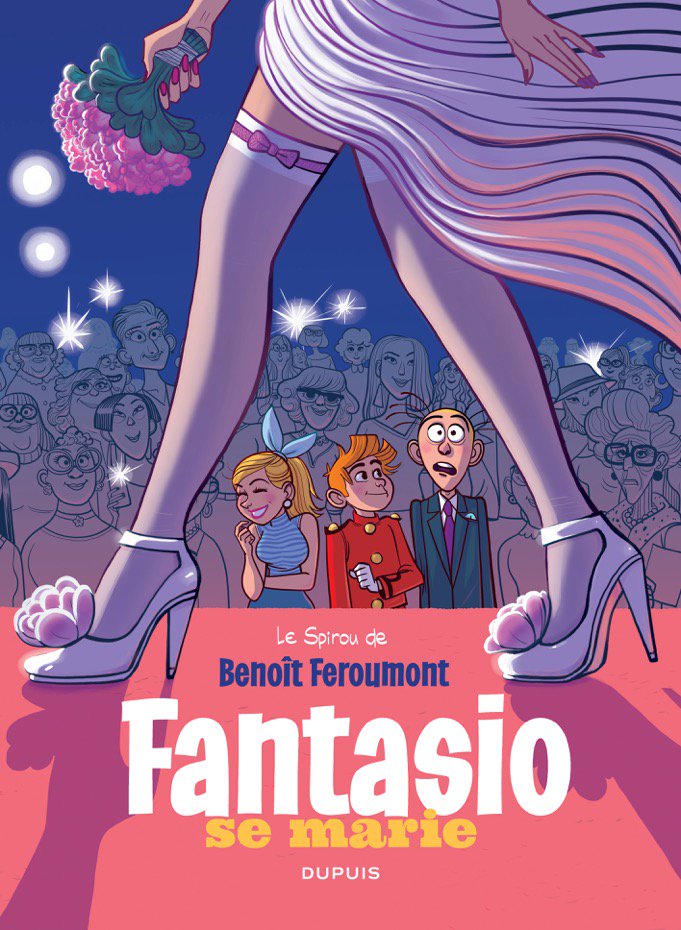
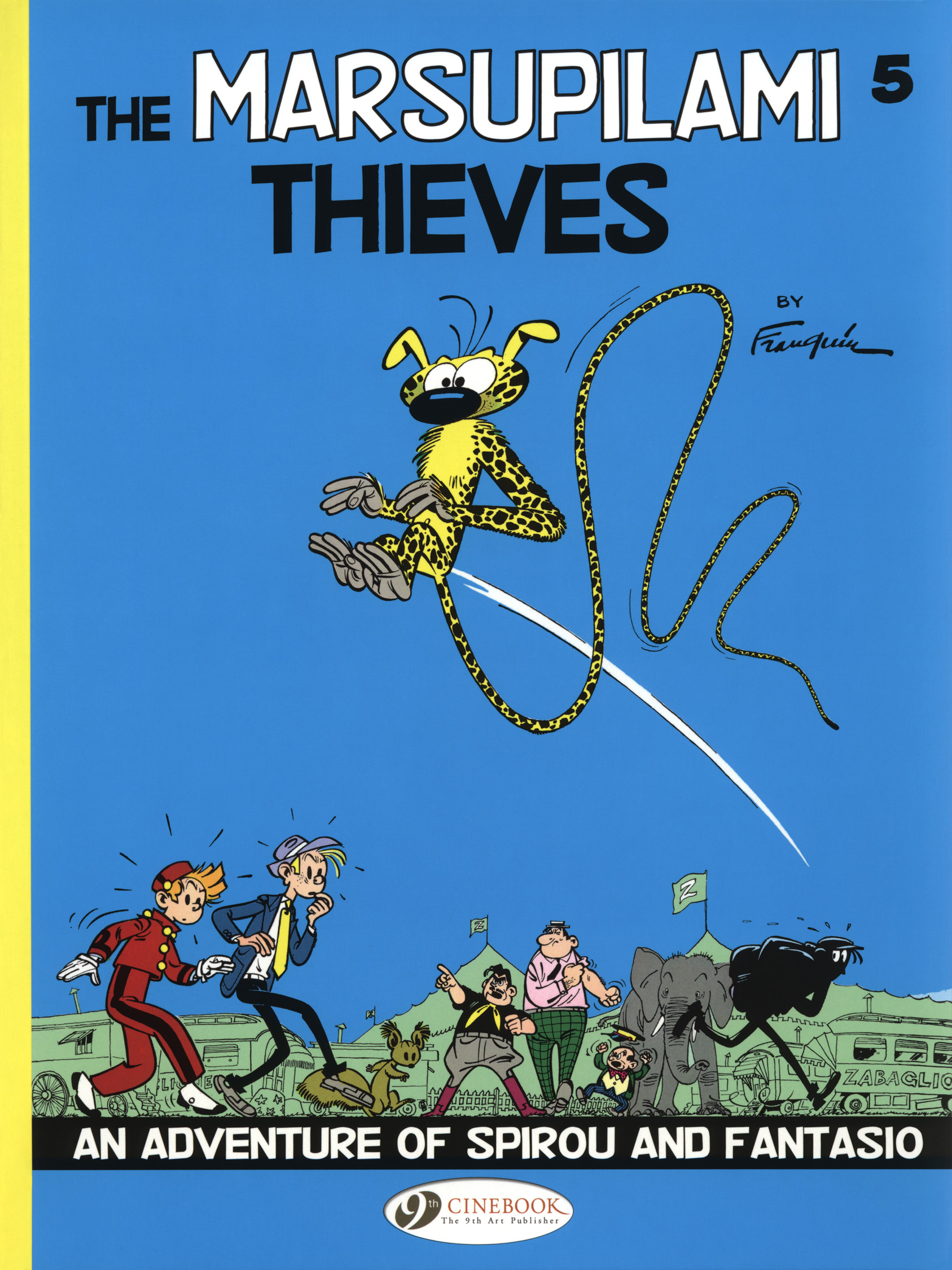
Looking forward to see the album in Norwegian. I thought their first album in the main series (Alerte aux Zorkons) was excellent, their second (La Face cachée du Z) was also good, although it maybe took of a bit too much in the end. The one-shot ( Les Géants pétrifiés) was ok, although I prefer their albums in the main series. I will read the full review after having read the story in June. Now I only read till the spoiler warning.
I have just read through the Norwegian edition of the album (I Vipers klør). I liked the story, although I prefer the first regular story of Yoann and Vehlmann.
In the review you write: “The friendship between Spirou and Fantasio is the heart of the series, and the fact that none of Yoann & Vehlmann’s adventures so far have really dealt with it (Les géants pétrifiés contriving a poorly motivated split between them) is probably the most worrying sign for their tenure.” I am not sure here what you mean by writing that they have not dealt with it. In what way? As you write yourself Les géants pétrifiés clearly deals with it. In what way do you mean that the three regular albums do not deal with it?
Well, my point was that I don’t think [i]Les géants pétrifiés[/i] captures the friendship between Spirou and Fantasio.
In an interview with Yoann that accompanied the [url=https://spiroureporter.net/2013/06/16/scanlation-sunday-the-adventures-of-spirou-yoann/]Spirou & Yoann[/url] page, they talk a bit about the album. The interviewer says that Yoann & Vehlmann portray Fantasio as an [i]arriviste[/i] (a social climber or hanger-on), and Yoann agrees, saying that a lot of good friendships start out that way: you notice things you don’t like about the other person, and it takes a while to get past that.
I think the first part is right: a lot of “The Petrified Giants” plays out as though they don’t know each other all that well yet, and don’t even particularly like each other. But even at the very end, I don’t see any signs that they’ve genuinely bonded. Spirou’s girlfriend sends him off to play with his friends (plural), but it’s his relationship with [i]her[/i] that is the focus.
Maybe “arriviste” could be translated as “careerist”.
Speaking of Coeurs Vaillants, the magazine Tintin had already been started in Belgium by then, but it took two years for the magazine to get a French edition. There also was another French magazine called only Vaillant around that time.
Maybe “arriviste” could be translated as “careerist”.
Sure. The general suggestion is that he attaches himself to Callaway’s entourage to further his own ambitions. He comes across as pretty unprincipled. What I find interesting about that is that one might infer that he had only taken up with Spirou for the same reason.
Fantasio is portrayed in a similarly unflattering way (as an unscrupulous muckraker) in Bravo’s one-shot as well as in the one by Parme & Trondheim. I wonder where they’re all getting it from; the only remotely similar example I can think of from the main series is in [i]Les pirates du silence[/i].